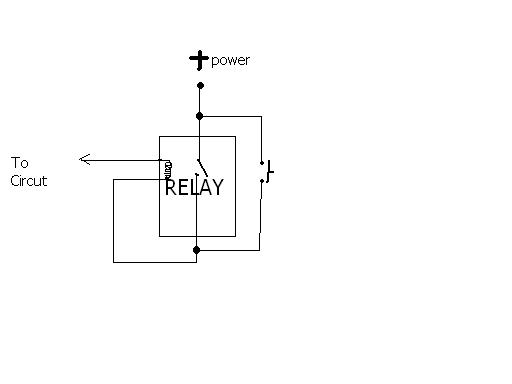Relay question that requires thinking and theory
View the attached picture. Remember the when the coil has current flowing through it, the switch inside the relay will close, allowing current.
Now tell me, what happens when you push the pushbutton?
Does the circuit stay on, or does the relay close up again?
I haven't tried this yet because I want to see what theories are generated here. :-)
Now tell me, what happens when you push the pushbutton?
Does the circuit stay on, or does the relay close up again?
I haven't tried this yet because I want to see what theories are generated here. :-)



Comments
On large motor (or other loads) circuits, the actual motor load is on a different set of contacts driven by the same relay.
John R.
Edit: The above ***-u-me-s that "circuit" goes to ground, which is probably not the case and a matter of misreading the partial schematic.
To latch, the coil would have to be in series with the relay contacts. As shown, it goes to an external circuit which is controlling the relay.
If the coil is not energized then the external circuit will not be able to energize it unless you hold the button down.
Rich H
I still say that, as drawn, it is intended to convey the idea of a latch... of course it is dependent on the "circuit" not shown.
If so then it depends on whether the circuit shows enough negative reference to energise the coil, if so and the button is pressed and the relay then closes it will stay latched until the circuit is interrupted
- IF as drawn (connections and normally open switch)
- IF the "supply" is the required voltage for the relay coil
- IF the "to circuit" is near 0v
...then the circuit does NO-thing initially. The relay switch will not close as it's in series with the coil and supply voltage.
Given the above assumptions, pressing the button will energize the coil and the relay switch will close - thereby maintaining coil current. The button becomes ineffective at this point.
Raise the voltage potential of "to circuit" above the minimum required by the coil to keep the relay switch closed, and it will open.
DJ
Second answer, trying to second guess the statement Remember the when the coil has current flowing through it, the switch inside the relay will close, allowing current.
Which I think is making the assumption that the "to circuit" is a low resistance load connected to ground. Otherwise current would not flow, right? So "to circuit" is not open circuit, and it is not a 1meg resistor, and it may not be a direct connection to ground, but it probably is something like a light bulb or a motor. In which case the relay latches on.
BUT - if "to circuit" is a propeller chip, no, the relay does not latch on. There is not enough current.
I do not have sufficient data to render a sound and safe engineering decision .